I remember the first time the sheer possibility of the Atlantis myth being real truly clicked for me. It wasn’t from a dusty library book, but from the flickering screen of my television late one night. I was watching a program that shifted the legend from a fantastical tale to a solvable historical mystery. It proposed that the "lost city" wasn't just a figment of Plato's imagination, but a memory of a real catastrophe, distorted by time. The show meticulously connected the dots between Plato's story and the volcanic Greek island of Santorini. That evening, I went from a casual observer to a captivated student of the subject. The power of a well-made atlantis theory documentary is its ability to transform abstract legend into tangible, compelling evidence, making you believe, even for a moment, that you're on the verge of solving one of humanity's greatest secrets.
Contents
- 1 Plato's Original Legend: The Blueprint for Any Atlantis Theory Documentary
- 2 The Santorini Connection: A Compelling Narrative for an Atlantis Theory Documentary
- 3 Akrotiri's Minoan Ghosts: What an Atlantis Theory Documentary Reveals About the Inhabitants
- 4 The Thera Eruption: Recreating the Apocalypse in an Atlantis Theory Documentary
- 5 Sifting Through the Ashes: The Scientific Evidence in an Atlantis Theory Documentary
- 6 Addressing the Inconsistencies: A Balanced Atlantis Theory Documentary
- 7 FAQ: Exploring the Atlantis Theory Documentary Further
- 8 References
- 9 Conclusion: The Enduring Power of a Lost City and Its Documentary Legacy
Plato's Original Legend: The Blueprint for Any Atlantis Theory Documentary

Before diving into any specific location, a credible atlantis theory documentary must first establish its foundation: the original text. The entire legend of Atlantis springs from a single source—the works of the ancient Greek philosopher Plato. Written around 360 BC, his dialogues, Timaeus and Critias, are not just philosophical treatises; they contain a detailed narrative that has fueled speculation for over two millennia. Understanding what Plato actually wrote is crucial to evaluating any theory, especially the compelling case for Santorini.
The Story from Timaeus and Critias: A Narrative Framework for the Documentary
In his dialogues, Plato presents the story of Atlantis as a true historical account, passed down through his family from the great Athenian lawgiver, Solon. According to the tale, Solon learned of Atlantis from Egyptian priests at Sais, who had preserved the record in their temples for thousands of years. The story is an epic of hubris and divine punishment. It describes a great naval power, Atlantis, located "in front of the Pillars of Hercules," which had conquered parts of Western Europe and Africa.
This powerful empire attempted to invade Athens but was heroically repelled by the ancient Athenians. Shortly after this failed invasion, the gods turned against the Atlanteans for their arrogance and greed. In a turn of cosmic justice, "in a single day and night of misfortune," the island of Atlantis was swallowed by the sea, vanishing forever. This dramatic end provides the core mystery that every atlantis theory documentary seeks to explain.
Key Characteristics of Plato's Atlantis: A Checklist for Theorists
Plato provides a surprisingly detailed checklist of Atlantis's features, which serves as the primary evidence for any proposed location. A documentary on the subject would meticulously cross-reference these points with archaeological and geological data. The key descriptors include:
- Unique Topography: The capital city was composed of concentric rings of land and water, created by the sea god Poseidon. A grand canal connected the outer sea to the central citadel.
- Advanced Engineering: The Atlanteans built incredible bridges, canals, and harbors. They adorned their buildings with exotic metals like orichalcum, which "gleamed with a red light."
- Rich Resources: The island was incredibly fertile, supporting a diverse range of plants and animals, including, most famously, elephants. It had abundant timber for shipbuilding and minerals for mining.
- Powerful Military: Atlantis possessed a massive army and a fleet of 1,200 warships, projecting its power across the known world.
- Specific Timing and Location: Plato states the war with Athens and subsequent destruction occurred 9,000 years before Solon's time (roughly 9600 BCE) and was located beyond the Pillars of Hercules (commonly understood as the Strait of Gibraltar).
-
Analysis: The challenge for any atlantis theory documentary is grappling with these details. Are they literal facts, or is the story an allegory—a cautionary tale about the dangers of imperial ambition? The Santorini theory gains its strength by suggesting that Plato's account is a "memory of a real event," even if some details were exaggerated or misinterpreted over the centuries of oral tradition before being written down.
The Santorini Connection: A Compelling Narrative for an Atlantis Theory Documentary
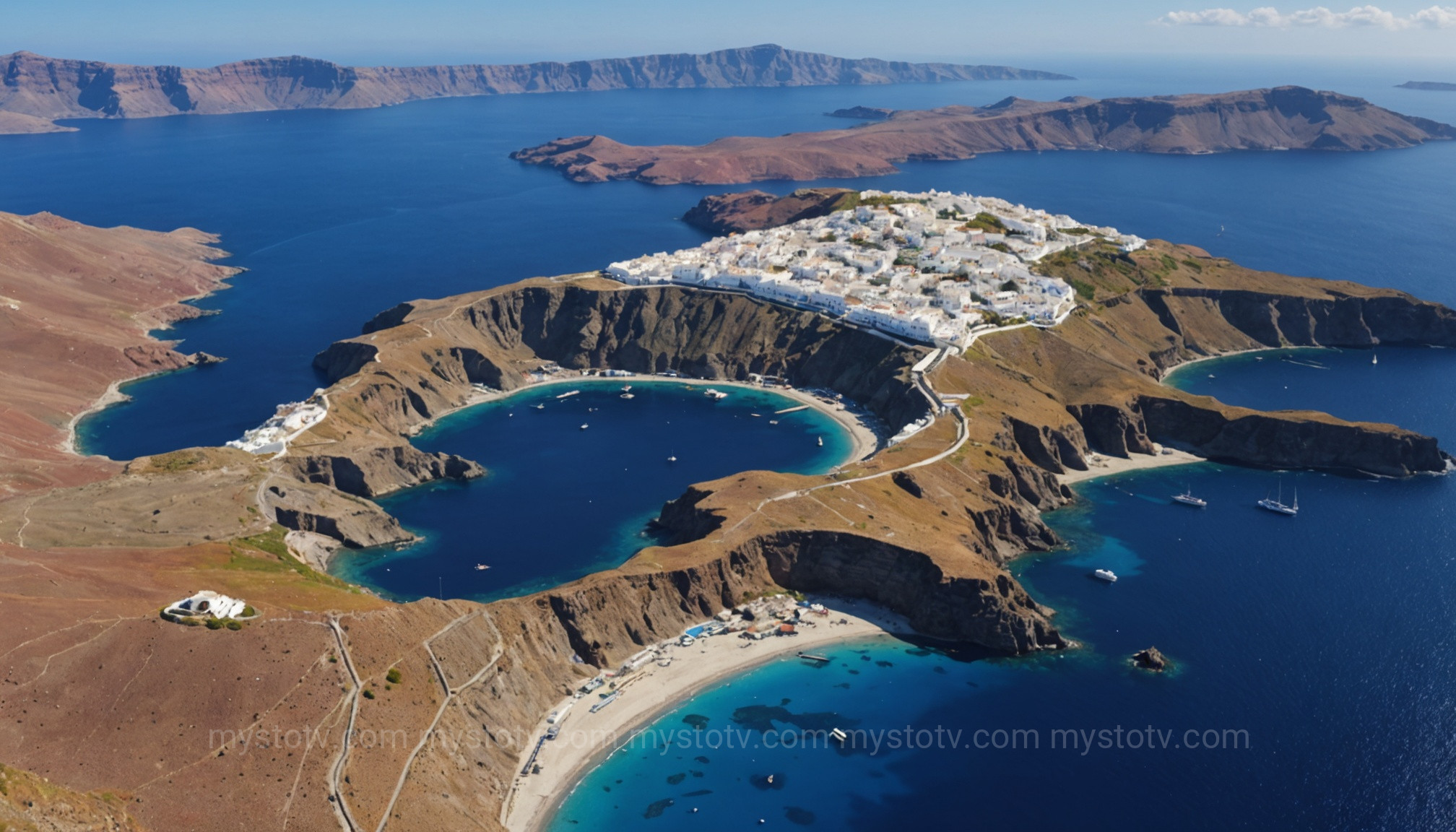
The hypothesis that the lost city of Atlantis was in fact the Minoan civilization on the island of Thera (modern Santorini) is the most scientifically supported and visually dramatic candidate. It's the reason why a dedicated atlantis theory documentary focusing on this connection is so captivating. This theory doesn't require a leap of faith into a sunken Atlantic continent; instead, it points to a known civilization and a documented cataclysm in the Aegean Sea.
Reinterpreting the Geography and Chronology for the Documentary
The Santorini theory hinges on re-evaluating two of Plato's key "facts": the location and the date. Proponents argue that these could be simple, understandable errors in translation or transmission over time.
- The "Pillars of Hercules": While typically identified as the Strait of Gibraltar, some scholars suggest the term could have referred to other landmarks within the Greek world. More compellingly, to an Egyptian priest telling the story to a Greek visitor, anything in the Aegean could be described as being in the "Atlantic" sea, or a sea to the west. A documentary would explore how ancient navigation and worldviews differed from our own, making such a reinterpretation plausible.
- The 9,000-Year Error: The date of 9600 BCE is a major sticking point. However, the "factor of ten" theory, first proposed by Greek archaeologist Angelos Galanopoulos, is elegant. He suggested that when Solon was translating the Egyptian records, a symbol for "100" was mistaken for "1000." If you divide 9,000 years by ten, you get 900 years. Adding that to Solon's time (~600 BCE) gives a date of roughly 1500 BCE—a near-perfect match for the date of the Thera eruption (~1600 BCE). A good atlantis theory documentary would illustrate this potential translation error visually, showing how easily it could have occurred.
The Circular Island and the Cataclysmic End in the Atlantis Theory Documentary
The most stunning parallels are geological. Before its massive volcanic eruption, Thera was a large, single, roughly circular island with a central lagoon—a natural parallel to Plato's concentric rings. The eruption, one of the largest in recorded human history, caused the center of the island to collapse, forming the dramatic sea-filled caldera we see today.
This event perfectly matches Plato's description of a city vanishing "into the depths of the sea" in a "single day and night." The explosive eruption and subsequent collapse would have been an apocalyptic event of unimaginable speed and violence. The visual power of CGI reconstructions showing a circular island imploding upon itself is a cornerstone of any documentary covering this theory.
Analysis: The Santorini theory's power lies in its ability to provide a rational, scientific explanation for the most mythical parts of Plato's story. It takes the legend out of the realm of pure fantasy and grounds it in the tangible sciences of geology and archaeology. An atlantis theory documentary focusing on Santorini can build a narrative arc that feels like a detective story, where the clues are buried under volcanic ash and the culprit is a volcano.
Akrotiri's Minoan Ghosts: What an Atlantis Theory Documentary Reveals About the Inhabitants
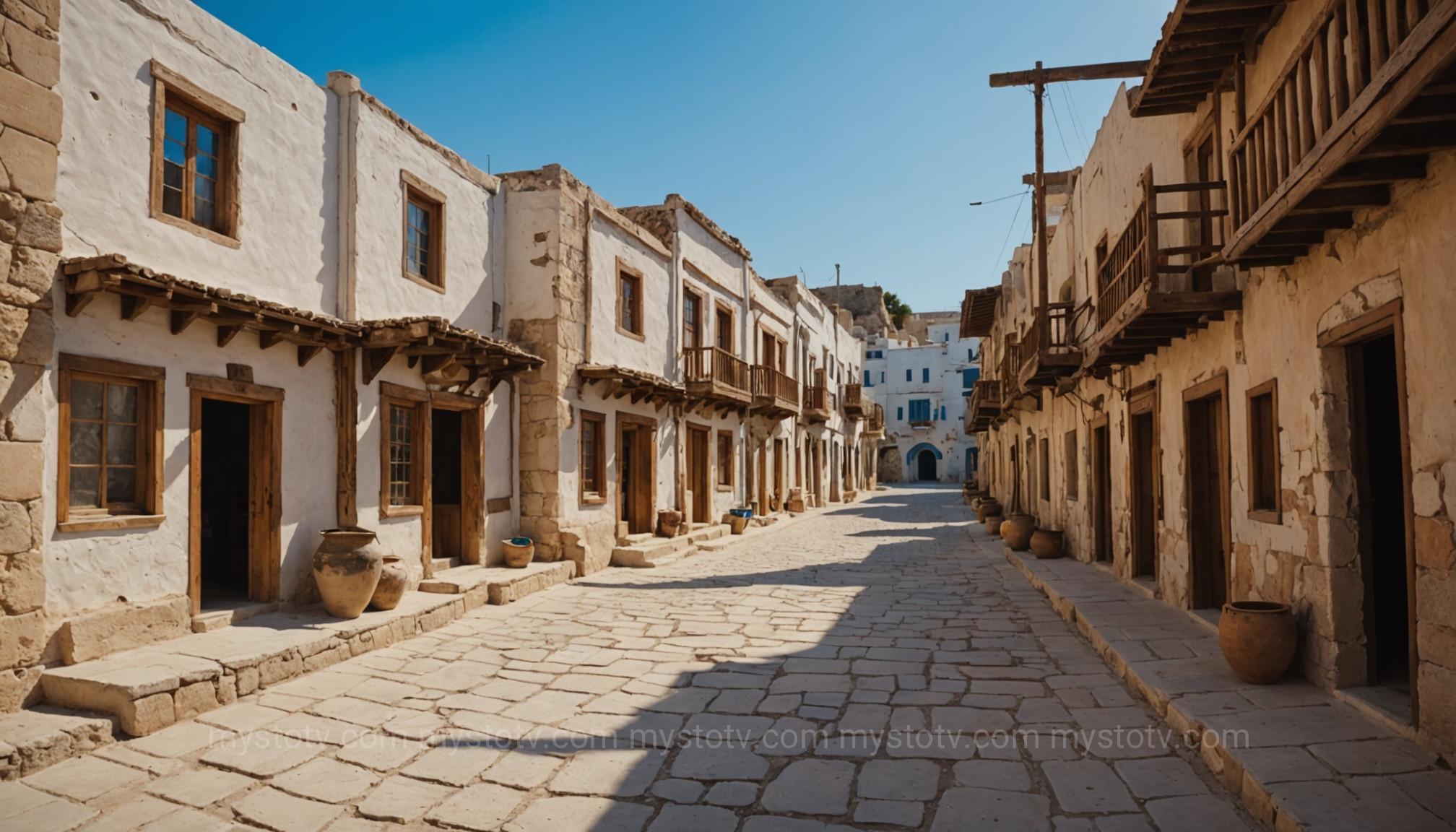
If Thera was Atlantis, then the people who lived there were the Atlanteans. The remarkably preserved Bronze Age settlement of Akrotiri, on the southern coast of modern Santorini, offers an unparalleled window into their world. Nicknamed the "Minoan Pompeii," Akrotiri provides the human element, the cultural DNA, that an atlantis theory documentary needs to bring the story to life.
A Sophisticated Society Frozen in Time: Visualized in the Documentary
Excavated from under a thick blanket of volcanic ash, Akrotiri reveals a society of stunning sophistication for its time (~1600 BCE). A documentary would walk viewers through these protected ruins, showcasing:
- Advanced Architecture: The city boasted multi-story buildings, paved streets with drainage systems, and even evidence of indoor plumbing in some elite houses. This level of urban planning rivals Plato's descriptions of an advanced civilization.
- Artistic Masterpieces: The frescoes preserved on the walls are the true treasure of Akrotiri. They depict vibrant scenes of nature (lilies, swallows, dolphins), religious processions, and daily life. They show a people with a deep appreciation for beauty and a high degree of artistic skill.
- A Global Trade Hub: Artifacts found at the site, including pottery from Crete, the Greek mainland, Cyprus, and even Egypt, prove that Akrotiri was a wealthy and cosmopolitan trading port. This aligns with Plato's description of a powerful seafaring nation.
One of the most famous frescoes, the "Flotilla" or "Ship Procession" fresco, is a long narrative panel showing a fleet of highly decorated ships traveling between two port towns. For theorists, this is a direct visual link to Plato's description of a powerful navy and a grand harbor.
The Mystery of the Missing Bodies: A Key Plot Point in the Atlantis Theory Documentary
Unlike Pompeii, where thousands were entombed in ash, archaeologists at Akrotiri have found almost no human remains and very few valuable, portable items like gold or jewels. This strongly suggests that the inhabitants were warned by preliminary earthquakes and tremors and conducted an orderly, large-scale evacuation before the final, cataclysmic eruption. This discovery adds a poignant layer to the story—a society advanced enough to read the warning signs of nature and escape, only to have their entire world obliterated behind them. An atlantis theory documentary would frame this as a bittersweet victory; they saved their lives but lost their home forever, becoming refugees whose story of a lost paradise could have morphed into legend.
Analysis: Akrotiri provides the tangible, human evidence that transforms the Santorini theory from a geological hypothesis into a compelling historical drama. It gives a face to the "Atlanteans." By exploring the ruins and digitally reconstructing the city based on the evidence, an atlantis theory documentary can make viewers feel as though they are walking the streets of the lost city itself, moments before its destruction.
The Thera Eruption: Recreating the Apocalypse in an Atlantis Theory Documentary
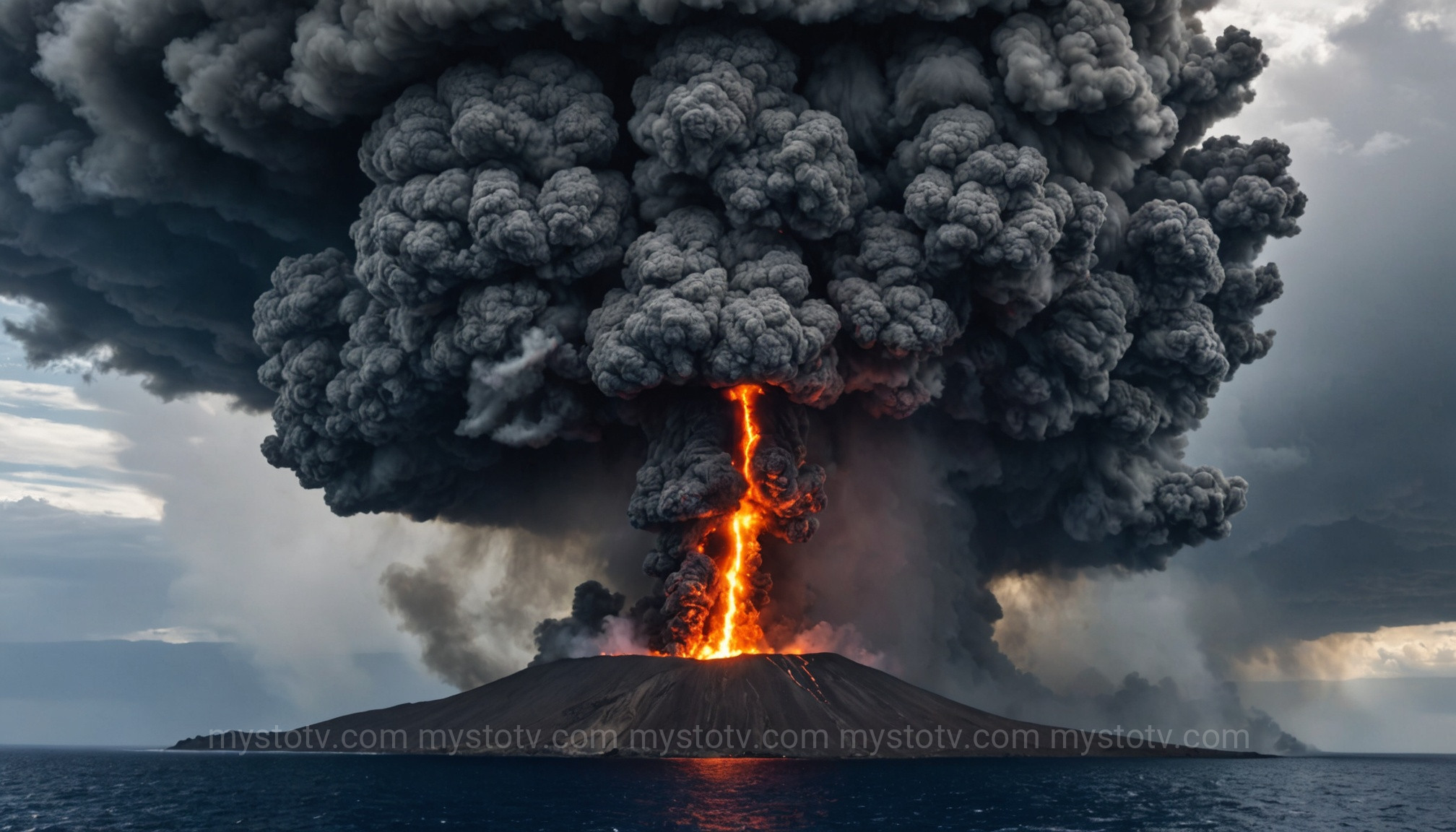
The centerpiece of the Santorini-Atlantis connection is the eruption itself. It is the real-world event that provides a scientifically plausible mechanism for the sudden and total destruction described by Plato. For any atlantis theory documentary, visually recreating this cataclysm is the dramatic climax, a moment of awe-inspiring terror that explains how a civilization could vanish from the map.
A Volcanic Force Beyond Comprehension: Explained in the Documentary
Modern volcanology has allowed scientists to piece together the sequence of the Thera eruption, which occurred around 1600 BCE. It is classified as a VEI (Volcanic Explosivity Index) 6 or 7 event, making it one of the most powerful eruptions in human history—many times stronger than the 1883 eruption of Krakatoa. A documentary would use cutting-edge CGI and interviews with volcanologists to illustrate the stages of destruction:
- The Plinian Plume: The eruption began with a massive column of ash and pumice being ejected up to 40 kilometers into the stratosphere. This would have blanketed the eastern Mediterranean in darkness and covered the island of Thera in meters of light pumice and ash.
- The Pyroclastic Flows: As the eruption column collapsed under its own weight, it generated pyroclastic flows—superheated avalanches of gas, ash, and rock traveling at hundreds of kilometers per hour. These flows would have sterilized the island and even traveled across the sea surface.
- The Caldera Collapse: The final, most destructive phase was the collapse of the emptied magma chamber beneath the volcano. The entire center of the island of Thera fell into the sea, creating the massive caldera that defines Santorini today. This is the literal "sinking" of the island.
Regional Devastation: Tsunamis and the Fall of the Minoans
The caldera collapse would have displaced a colossal volume of seawater, generating tsunamis estimated to be between 35 and 150 meters high. These waves would have radiated outwards, smashing into the northern coast of Crete, the heartland of the Minoan civilization, just 110 kilometers away. These tsunamis would have obliterated coastal towns, destroyed fleets at anchor, and salinated fertile farmland, crippling the Minoan economy and naval power. The narrative presented in an atlantis theory documentary is that the eruption didn't just destroy "Atlantis" (Thera); its after-effects mortally wounded the entire Minoan civilization, leading to their eventual decline and conquest by the Mycenaeans. The memory of this singular, civilization-ending event could easily have become the legend of Atlantis.
Analysis: The scientific account of the Thera eruption provides the theory with its most potent evidence. It explains not only the disappearance of one island but the decline of an entire culture. For a documentary, it is pure visual drama. The eruption serves as the story's villain—a force of nature so immense that it could plausibly be remembered as the wrath of the gods, just as Plato described. It's the ultimate "howdunnit" explanation for the Atlantis mystery.
Sifting Through the Ashes: The Scientific Evidence in an Atlantis Theory Documentary
Beyond the compelling narrative, a truly great atlantis theory documentary must ground itself in the hard data. The case for Santorini as Atlantis is not just a story; it's a hypothesis built on decades of scientific research from multiple disciplines. This section is where the "theory" becomes a robust scientific investigation, featuring the experts who have dedicated their careers to uncovering the truth.
Core Samples and Ash Layers: The Geological Fingerprint
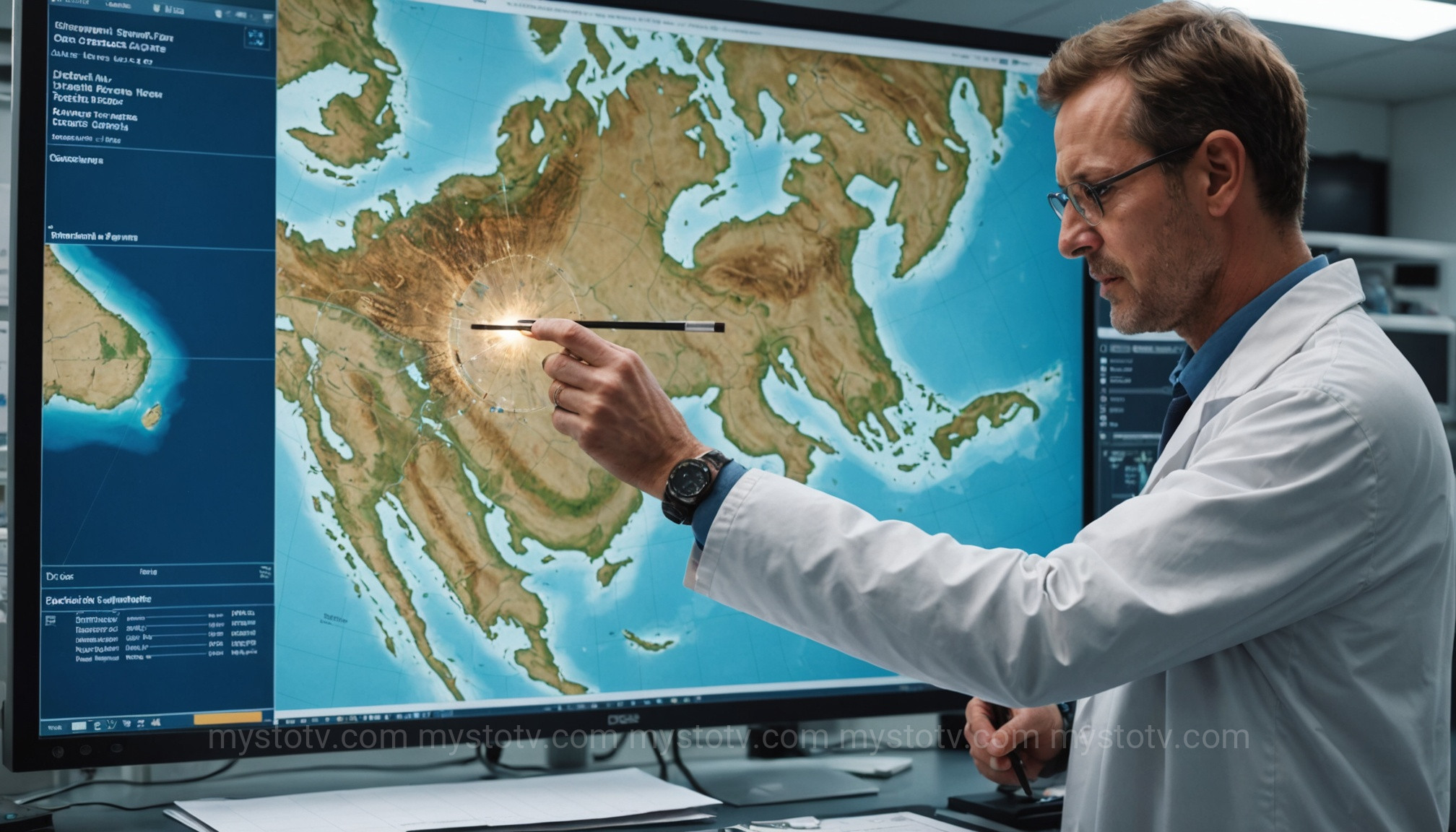
One of the most powerful tools for verifying the Thera eruption's impact is the analysis of its ash, known as tephra. Marine geologists take long core samples from the seabed across the Mediterranean and beyond. Within these cores, the ash layer from the Thera eruption provides a clear, datable "fingerprint."
A documentary would show this process in action: scientists extracting cores from a research vessel, then analyzing the layers back in a lab. This evidence allows them to:
- Date the Eruption: By radiocarbon dating organic material found just above and below the ash layer, scientists have pinpointed the eruption to a narrow window around 1600 BCE.
- Map the Impact: By finding Thera's ash in Turkey, Egypt, and across the Aegean, they can map the immense scale of the ash fall, confirming its potential to cause climate-altering effects and agricultural disruption across the entire region.
This geological evidence provides a concrete timeline and geographic scope for the disaster, moving it from speculation to documented fact.
Archaeology of a Collapse: Evidence from Crete and Beyond
The archaeological evidence complements the geological story. An atlantis theory documentary would contrast the findings at Akrotiri with those on the much larger island of Crete. While Akrotiri was abandoned, many Minoan sites on Crete show clear signs of destruction dating to the post-eruption period. Archaeologists have found evidence of:
- Tsunami Deposits: At sites like Palaikastro on Crete's eastern coast, researchers have found debris, jumbled building materials, and marine life deposited far inland, consistent with a massive tsunami.
- Fires and Destruction: Many Minoan palaces and villas show evidence of being destroyed by fire shortly after the eruption, suggesting social unrest, invasion, or the collapse of central authority in the wake of the cataclysm.
- Cultural Shift: In the period following the eruption, Minoan culture begins to wane, and Mycenaean (mainland Greek) influence grows, culminating in their eventual takeover of Crete.
Analysis: This section is crucial for building credibility. By presenting the scientific methodology and data, an atlantis theory documentary demonstrates that the Santorini hypothesis is not just wishful thinking. It's a multidisciplinary scientific theory supported by tangible evidence from the sea floor, ice caps, and archaeological digs. It allows the viewer to see that the story is built on a foundation of fact, making the conclusion all the more plausible.
Addressing the Inconsistencies: A Balanced Atlantis Theory Documentary
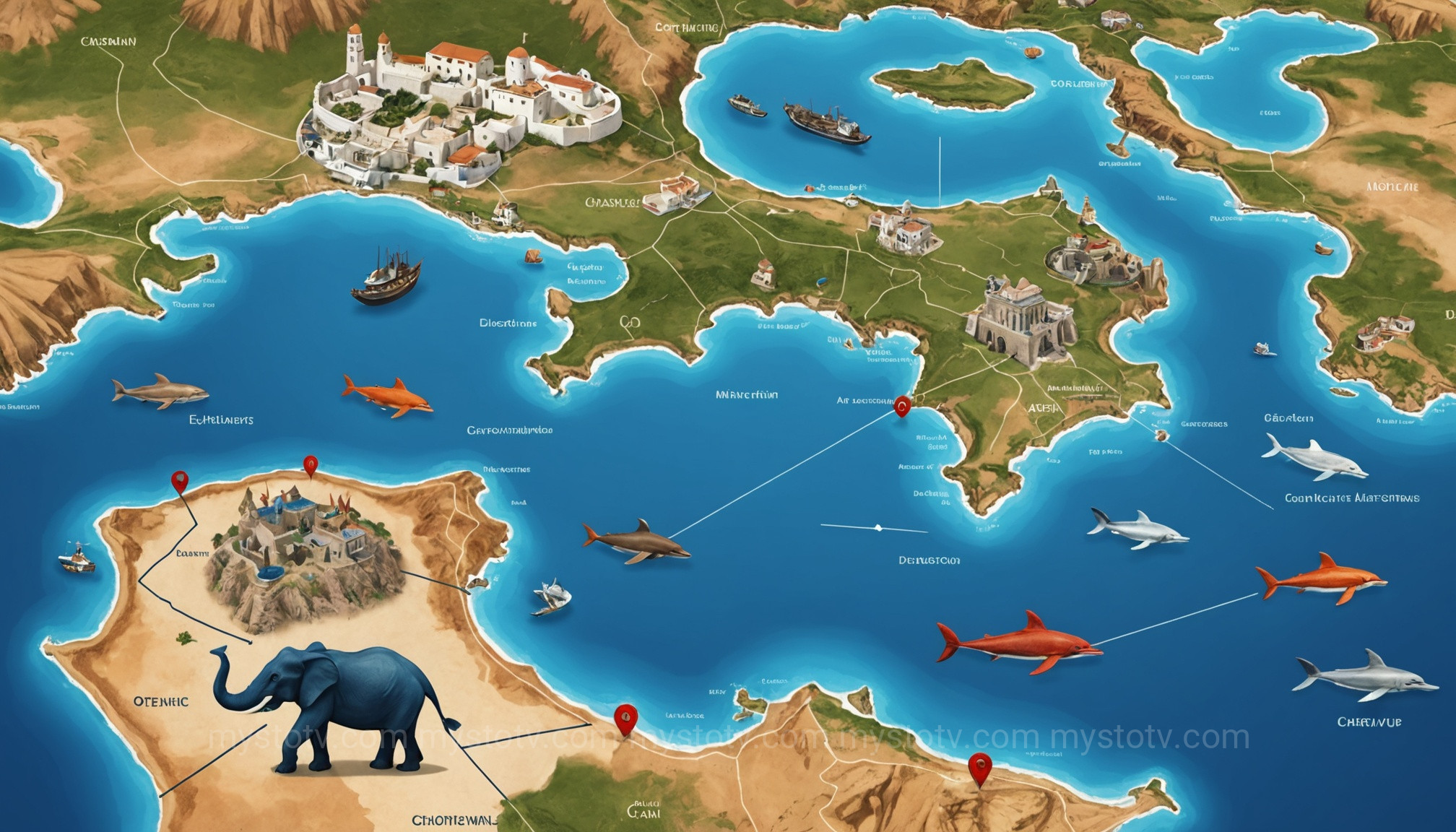
No theory is without its challenges, and a responsible, intellectually honest atlantis theory documentary must confront the arguments against the Santorini hypothesis head-on. Acknowledging the discrepancies doesn't necessarily weaken the theory; instead, it provides a more complete and balanced picture, allowing the viewer to weigh the evidence for themselves. The strongest arguments against the Santorini connection are rooted in taking Plato's text literally.
The Location and Scale Problem: Elephants in the Aegean?
The two most significant hurdles are Plato's explicit statements on location and scale.
- "Beyond the Pillars of Hercules": As mentioned, this is the clearest geographical contradiction. While proponents offer explanations like mistranslation or a different meaning for the "Pillars," skeptics rightly point out that we cannot simply ignore Plato's most specific directional instruction.
- The Size of the Empire: Plato describes a continent-sized landmass ("larger than Libya and Asia combined") with a military of staggering proportions, including 10,000 chariots and an army of over a million soldiers. The entire Minoan civilization, while influential, was a fraction of this size. Furthermore, Plato mentions elephants on Atlantis, an animal entirely absent from the Bronze Age Aegean.
A documentary would need to present these points clearly, perhaps interviewing a skeptical historian who argues that these details prove Plato was either inventing a story or referring to a different legend entirely.
The Allegory Argument: Was Atlantis Just a Story?
The most common academic position is that Atlantis was never a real place. Instead, it was a philosophical allegory, a cautionary tale created by Plato to serve his political and philosophical arguments in The Republic and other works. In this view, Atlantis represents the corrupt, hubristic, and wealthy sea power, while ancient Athens represents the ideal, virtuous, land-based state. The story of Athens defeating the far more powerful Atlantis serves as a fable to illustrate the superiority of Plato's ideal society. An atlantis theory documentary must give this perspective its due, as it represents the mainstream scholarly consensus. The argument is that searching for a real Atlantis is like searching for the physical location of Tolkien's Mordor.
Analysis: By including these counterarguments, the documentary becomes more than just advocacy for a single theory; it becomes a genuine investigation. It acknowledges the complexity of the mystery and respects the viewer's intelligence. It frames the central question not as "Was Santorini Atlantis?" but rather, "Is the Santorini theory the best fit we have for a real-world event that could have inspired Plato's legend, despite the inconsistencies?" This nuanced approach is more satisfying and ultimately more persuasive than ignoring the problems.
FAQ: Exploring the Atlantis Theory Documentary Further
- Was Atlantis a real place?
- There is no definitive proof that Atlantis, as described by Plato, was a real historical place. The overwhelming consensus among mainstream historians and archaeologists is that Atlantis was a fictional invention by Plato used for philosophical purposes (an allegory). However, the Santorini theory proposes that the story was inspired by a real event: the eruption of Thera and the subsequent collapse of the Minoan civilization.
- What is the single strongest piece of evidence linking Santorini to Atlantis?
- The strongest piece of evidence is the geological and topographical match. The fact that a large, circular island existed, which then catastrophically collapsed into the sea following a volcanic eruption, provides a near-perfect parallel to Plato's core description of how Atlantis was destroyed. This real-world cataclysm offers a plausible scientific explanation for the most fantastical part of the legend.
- If Akrotiri was evacuated, where did the people go?
- This is a major area of ongoing research. It's believed the inhabitants of Thera likely fled to other Minoan settlements, primarily on Crete or other Aegean islands. Some scholars speculate that these refugees, arriving with a harrowing story of their home island disappearing into the sea, could be the originators of the legend that was eventually passed down to Plato. Their integration into other communities, however, is difficult to trace archaeologically.
- Why do most mainstream historians and archaeologists reject the Atlantis-Santorini theory?
- The primary reasons for rejection are the major discrepancies in Plato's text. They point to the location ("beyond the Pillars of Hercules"), the date (9600 BCE vs. 1600 BCE), and the scale (a continent-sized empire with elephants vs. the Bronze Age Minoans). For most scholars, these inconsistencies are too large to be explained away by translation errors and suggest that Plato was not describing the Minoans. They believe the story is best understood as a philosophical fable.
References
- Pellegrino, Charles. Unearthing Atlantis: An Archaeological Odyssey. Vintage, 1993.
- Plato. Timaeus and Critias. Translated by Desmond Lee, Penguin Classics, 1977.
- Doumas, Christos G. Thera: Pompeii of the Ancient Aegean. Thames & Hudson, 1983.
- Friedrich, Walter L. Fire in the Sea: The Santorini Volcano: Natural History and the Legend of Atlantis. Cambridge University Press, 2000.
- National Geographic. "Lost City of Atlantis." National Geographic Society, www.nationalgeographic.com/history/article/lost-city-atlantis. Accessed 15 Oct. 2023.
Conclusion: The Enduring Power of a Lost City and Its Documentary Legacy
The connection between Santorini and Atlantis remains one of history's most tantalizing "what ifs." While we may never find a signpost that reads "Welcome to Atlantis," the parallels between Plato's legend and the fate of the Minoan civilization on Thera are too numerous and too specific to be dismissed lightly. The circular island, the advanced culture frozen in time at Akrotiri, and the civilization-ending volcanic cataclysm form a narrative chain that is both scientifically plausible and deeply compelling.
Ultimately, the enduring appeal of this mystery is what makes it such a perfect subject for an atlantis theory documentary. It allows us to become detectives, sifting through ancient texts, geological data, and archaeological ruins. It blends myth with science, and history with tragedy. Whether Plato's Atlantis was a direct memory of the Thera eruption or simply an echo of a great catastrophe that reverberated through the ancient world, the search for answers brings a lost world vividly back to life. A great documentary does not necessarily provide a final answer; it illuminates the mystery, respects the evidence, and leaves us staring out at the Santorini caldera, wondering.